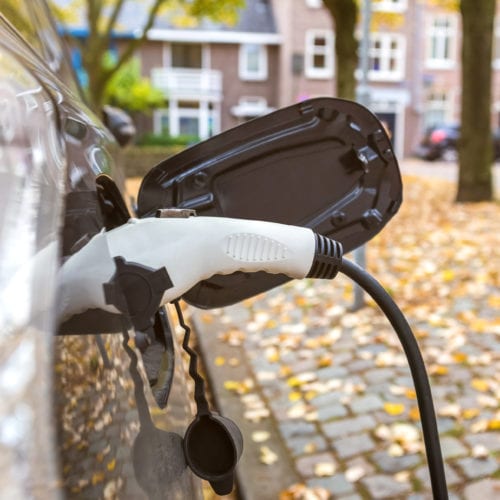
On the Road to Clean, Equitable Mobility
A Pit Stop at RMI Helps Projects Get in the Fast Lane
The leading transportation electrification projects have a clear beginning and end, but the route in between can be a maze of forks in the road that can easily lead project teams into high congestion. An early pit stop at RMI’s Mobility Innovation Lab (MIL) can redraw the roadmap and put project teams back in the fast lane. Building on a foundation laid last year in the Midwest, Rocky Mountain Institute applies an intensive workshop method, filled with experts from the field, for teams to recalibrate and take a giant step forward in only a few days in what would otherwise take half a year.
Transportation emissions are the primary source of local air pollution and have recently become the leading contributor to climate change. Many organizations have been hard at work for a decade instituting policy, raising investment capital, and advocating for electric vehicles and charging infrastructure. Today, we see record EV sales, unprecedented commitments to electric buses, announcements of large investments in manufacturing capacity, projections showing that EVs will soon be cost competitive, utilities clamoring to build charging infrastructure, venture capital propping up vehicle and charging startups, and cities committing to climate goals. Yet the electric mobility future is at best a glimmer in consumers’ eyes and we remain far below the path of high adoption that several leading states have committed to. Why? Because many of the barriers standing in the way are not solved with economies of scale and new battery technologies. These challenges require a diverse set of stakeholders with competing priorities to come to a common understanding of the problems, align on a vision for the future, and unlock transformative solutions with creativity and design thinking. RMI’s Mobility Innovation Lab did just this during our recent project accelerator in early August.
This post is the first in a three-part series providing a snapshot of the project teams that applied for and were accepted to the MIL Project Accelerator. This piece focuses on light-duty vehicles and highlights the work of a team from Hawaii focused on electrification of government fleets, and a team from Colorado intent on electrifying transportation network companies (TNCs) such as Lyft and Uber.
Hawaii’s Pathway to Clean Vehicle Fleets
The Hawaii team arrived ready to jump in and tackle the question of how to structure and implement innovative financing and procurement mechanisms to help transition Hawaii’s state and county fleets to zero emission vehicles. The team—including representatives from state and county government and the private sector—all brought different perspectives, along with a passion and dedication to support Hawaii in achieving its ambitious commitment of 100 percent clean energy and oil independence by 2045.
Through the collaborative process, the team gained a deeper understanding of the current system, and which components to shift in order to accelerate the transition of their government fleets. Coming into the Project Accelerator, the team struggled to describe their problem in a way that ensured buy-in from all stakeholders. To better convey their collective challenges, they used a traditional communication style of metaphor. In this case the coconut served that purpose—a shroud of fibrous and abrasive material inhibits considerations for change, and once through the outer protective layer, a nearly impenetrable shell that has to be broken to get to the sweet meat inside—the prize of a solution set. The metaphor represents challenges in people and perceptions, a barrier that often needs to be changed in order to advance world-changing ideas.
The team also aligned on the fact that there are multiple ways to get to the inside of the coconut —from using a machete to make a direct hit, to carefully peeling back those fibrous layers, to finding the right spot to tap with a rock. “I already started applying ideas from the MIL Accelerator in a meeting this morning,” said Riley Saito, deputy director in the Research and Development Department for the County of Hawaii. “Focus on the problem in order to clearly identify the needs and wants for a solution.” When it comes to government fleets, the options to be explored further include: running a request for information (RFI) prior to procurement to better understand what innovative solutions might be available; developing a price list for clean vehicle options similar to those used for government procurement of other goods; and identifying opportunities for integrated pre-planning before the final procurement process. All of these ideas center on the necessity to collaborate across the state and county levels for a bulk acquisition, and that coordinating across stakeholders and identifying internal champions is at the top of the team’s list of next steps.
With their clear definition of the problem and the current system in mind, the Hawaii team is moving forward, together, to accelerate the state’s government fleet transition and will expand the group of stakeholders involved in the conversation with a Peer Exchange Workshop in September.

Promoting Shared and Electric Mobility in Colorado
The Colorado team focused on promoting shared and electric mobility in ride-hailing services. Lyft and Uber have quickly grown to become an essential part of the transportation sector in cities across the country, spawning controversy about this new mode of transit, so we were excited to have the opportunity to work with a team to reduce the impact of emissions. As the use of these mobility services increases so does the need and opportunity for electrification. The average full time driver for a ride-hailing service may put 50,000 miles a year on his or her car (New York City cabs put on 70,000 miles per year, and can far exceed that amount with multiple drivers). This kind of utilization makes ride-hailing ripe for electrification because the operating costs of an electric vehicle can be significantly lower than an internal combustion engine vehicle. However, what pencils on paper doesn’t always translate into consumer choice.
For a variety of reasons, electric vehicles are not seeing significant uptake among ride-hailing drivers. That’s why the Southwest Energy Efficiency Project (SWEEP) assembled a project team aimed at accelerating the adoption of electric cars in ride-hailing fleets. The team included representatives from Lyft, Xcel Energy, the Colorado Department of Transportation, and other key stakeholders from the City of Denver. During the Project Accelerator the team converged on the metro region of Denver, Colorado, with the ultimate goal of electrifying all such vehicles by 2030, and a stretch goal of 2025 if the right levers could be utilized. Travis Madsen, the director of transportation at Southwest Energy Efficiency Project said, “My experience at MIL enabled me to work with other stakeholders outside of a legislative or regulatory context which opened opportunities for better cooperation.”
To best ensure success, the team focused its efforts on strategies to enable the electrification of ride-hailing services’ rental fleets. These are the vehicles that Lyft and Uber lease to drivers. The team agreed that this approach would be a more efficient way of getting electric vehicles into the hands of drivers, because drivers commonly using their own cars are a much harder sell. Instead, if ride-hailing services offer leases of electric vehicles at cost-competitive rates, they can provide a lower risk and more attractive option for drivers, as well as a more streamlined approach to electrifying the industry.
The team identified critical economic enablers for electrification of ride-hailing rental fleets that lower the barrier to an EV option and address access to charging:
- Offsetting the additional cost of leased EVs with transportation funds reallocated by state agencies.
- Installing fast-charging sites at high traffic destinations—such as airports, sporting venues, and entertainment districts—where drivers frequently pick up and drop off riders.
- Establishing community hubs in close proximity to housing, where drivers can conveniently park and charge their cars overnight. These locations are especially important for drivers without access to designated parking or charging at home.
- Offering programs for charging infrastructure at key multifamily housing developments that would serve multiple uses, with particular emphasis on affordable housing.
Though policy levers are also important economic stimuli, the team chose to focus on economic barriers that can move the needle this year and allow the policy path to take its own independent course. The team believes that if the above actions are accomplished by each responsible stakeholder, electric ride-hailing will provide additional profits to drivers participating in the gig economy. By rendering the service low cost, convenient, and preferable to driving a gasoline-powered vehicle, the team hopes to unlock mainstream adoption of electric vehicles in ride-hailing rental fleets. Going forward, the team will build upon the collaborative relationships formed at the MIL Project Accelerator and include additional stakeholders in their next steps.
In order to swiftly cruise down the road toward an electrified mobility future that provides cleaner, healthier, sustainable, and inclusive options, we need to take bold steps today to advance leading edge projects. Stakeholders who have never interacted before must become intimately familiar with each other’s needs and challenges. The basic assumptions we’ve held about transportation for the past 100 years must be unearthed and redefined. Systems thinking that expands the solution space to include all the ways we move from point A to point B is needed. RMI’s Mobility Innovation Lab helps do exactly that. Join us on this road.
Tune in to the next blog posts covering bus electrification, transit access, equity, and the benefits of electrified and reliable mobility.




